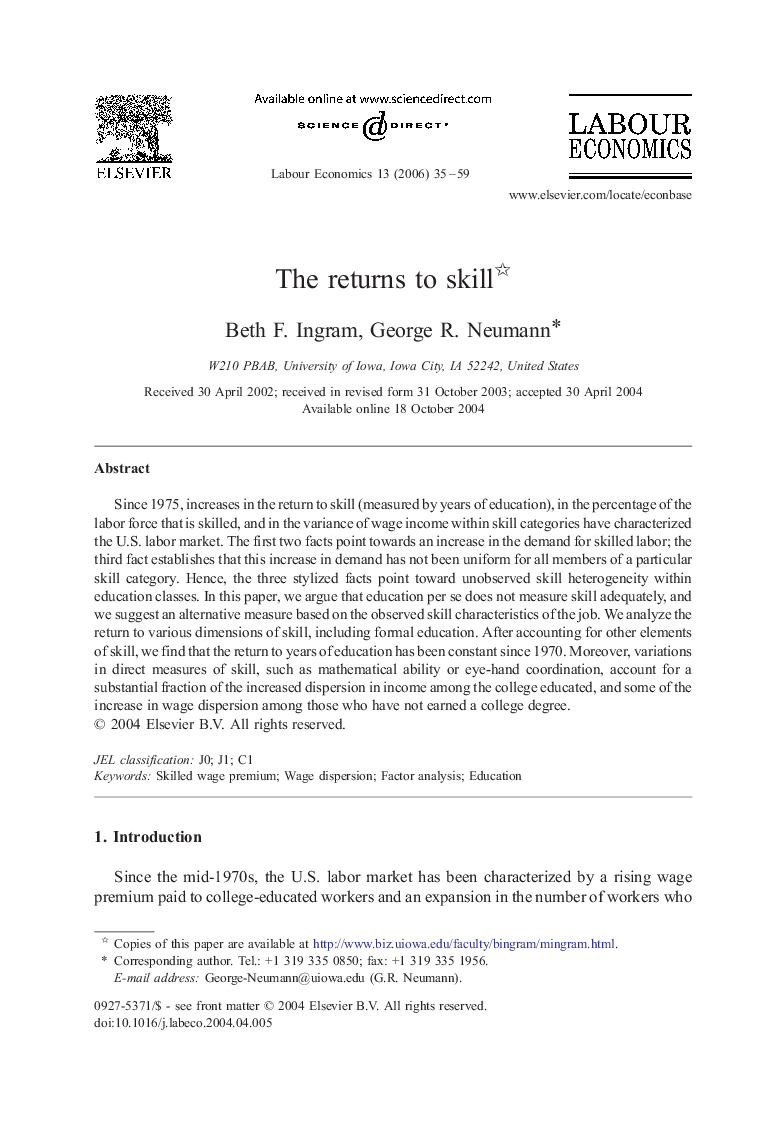| Article ID | Journal | Published Year | Pages | File Type |
|---|---|---|---|---|
| 972542 | Labour Economics | 2006 | 25 Pages |
Since 1975, increases in the return to skill (measured by years of education), in the percentage of the labor force that is skilled, and in the variance of wage income within skill categories have characterized the U.S. labor market. The first two facts point towards an increase in the demand for skilled labor; the third fact establishes that this increase in demand has not been uniform for all members of a particular skill category. Hence, the three stylized facts point toward unobserved skill heterogeneity within education classes. In this paper, we argue that education per se does not measure skill adequately, and we suggest an alternative measure based on the observed skill characteristics of the job. We analyze the return to various dimensions of skill, including formal education. After accounting for other elements of skill, we find that the return to years of education has been constant since 1970. Moreover, variations in direct measures of skill, such as mathematical ability or eye-hand coordination, account for a substantial fraction of the increased dispersion in income among the college educated, and some of the increase in wage dispersion among those who have not earned a college degree.
